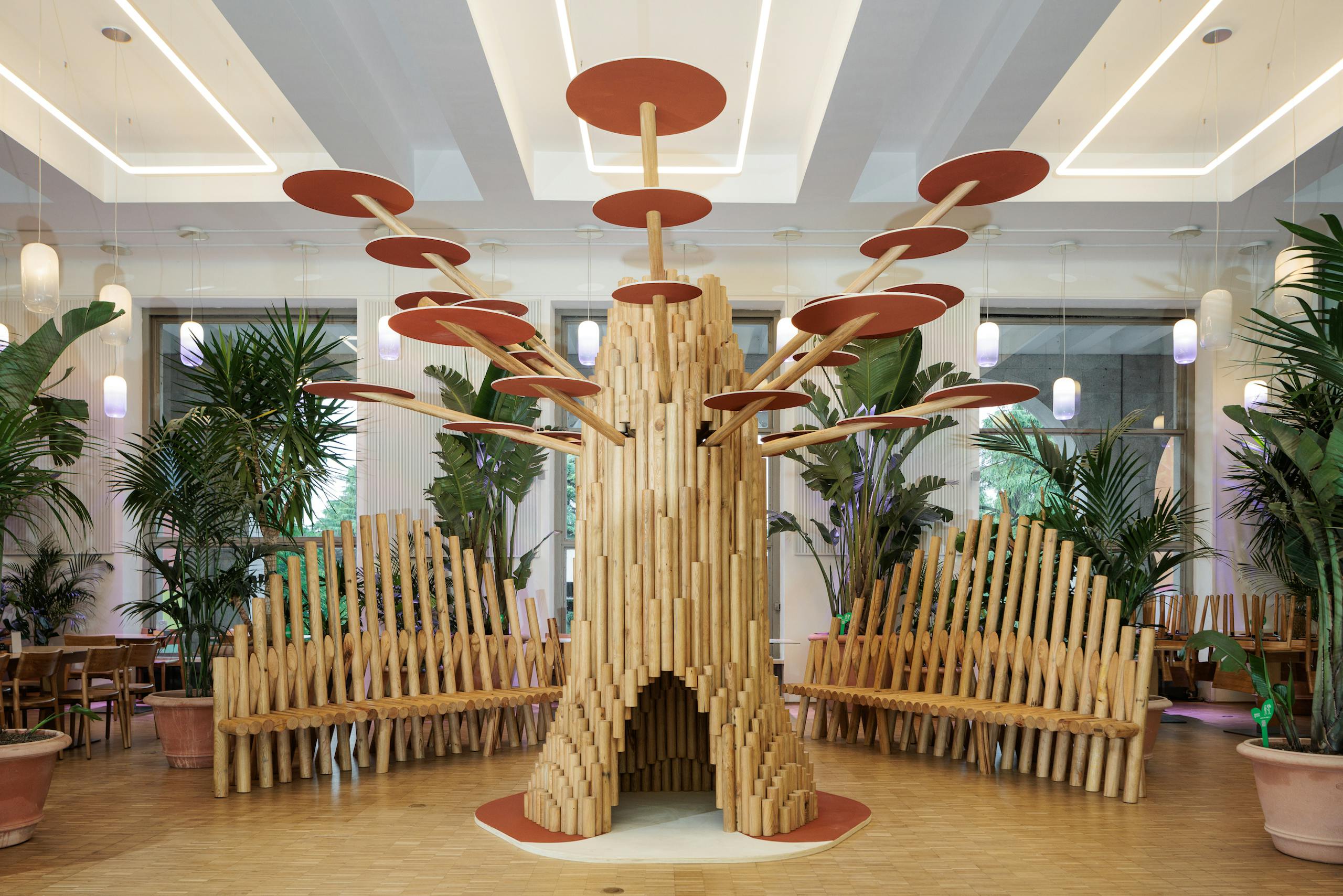
23rd Triennale Milano International Exhibition's Special Projects
A number of directly commissioned works complements the constellation of projects of the 23rd Triennale Milano International Exhibition. Through different multisdisciplinary approaches, they intend to offer a variety of points of view over the unknown that surrounds us. From music to science, through art, architecture and design, this edition's special projects reiterate the fundamental concepts at the base of Unknown Unknowns. An Introduction to Mysteries, expanding their implications and horizons.
Francis Kéré at the 23rd International Exhibition
Francis Kéré
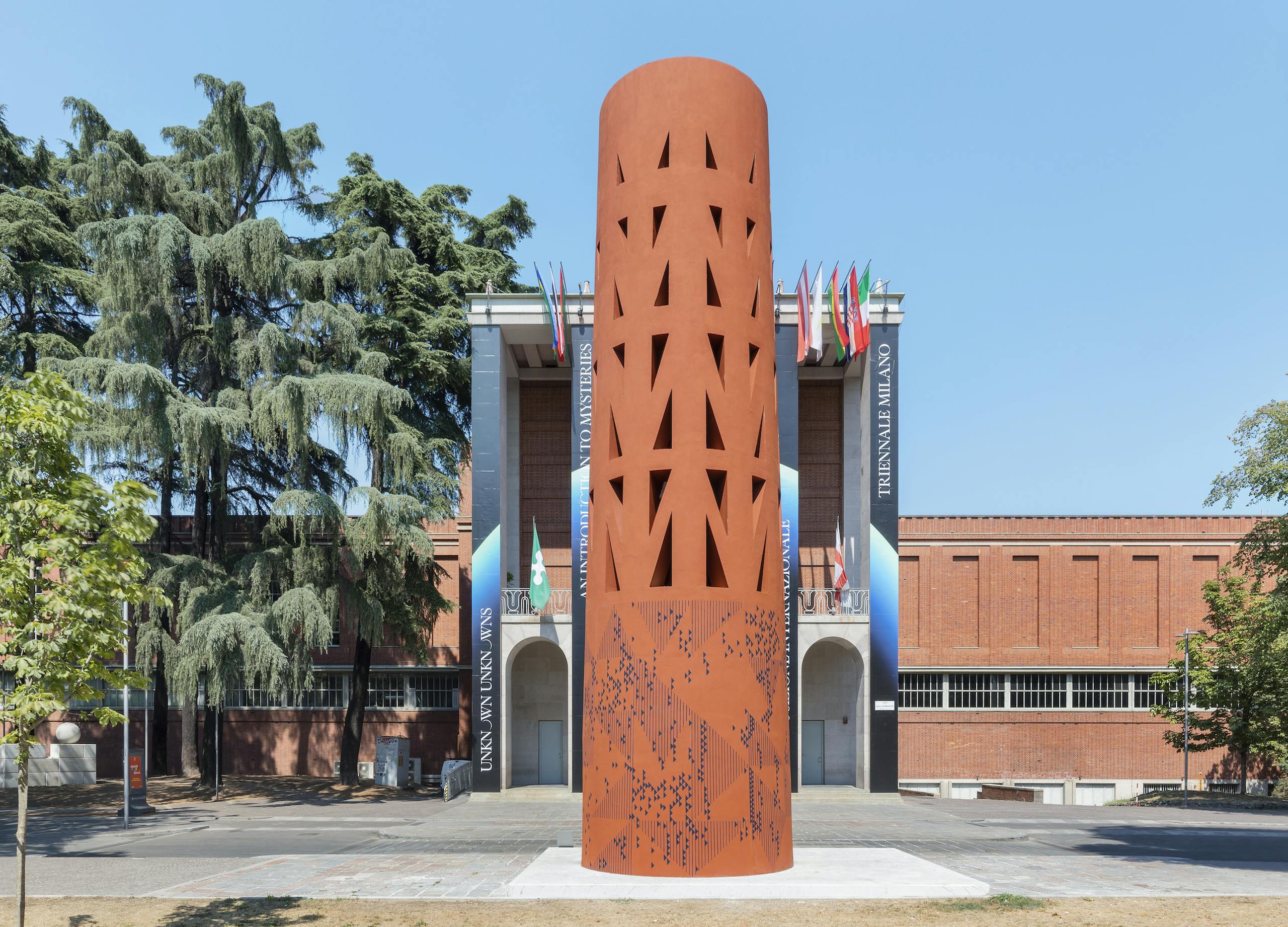
ph. DSL Studio
In a day and age where the possibility of 3D printing entire buildings is being discussed, the works by Francis Kéré at the 23rd Triennale Milano International Exhibition are reminiscent of the building and material knowledge that got us to this point and that we should not forget as we move forward.
Greeting visitors outside the exhibition spaces is a 12mt-high tower, The Future's Present. Clad in contemporary renditions of traditional patterns one finds in the vernacular architecture across parts of Burkina Faso, the work involves visitors from the very beginning with a sentiment of exploration, surrouding them with visuals that speak to what already was and what is yet to come.
Amidst all the international pavilions, which this year include an exceptional number of African countries, sits the installation Yesterday's Tomorrow. The work is made of two walls curving into one another to create a secluded space that invites visitor to sit and think about the rather big questions of the 23rd International Exhibition. Here too the walls are painted with patterns reminiscent of motifs found in vernacular architecture in Burkina Faso, decorations that tell stories, speak to who lives in a place, who constructed it and who protects it.
Finally, Francis Kéré has designed a gathering space in the cafeteria in close collaboration with Lavazza and Triennale Milano. “Under a Coffee Tree” brings an interpretation of a tree under which people can come together much like on a public square, just like the coffee ritual gathers people from all over the world.
At their base all of the Francis Kéré interventions deals with practices and themes that too often are left out of mainstream, usually tackled in a superficial and already defined way among Eurocentric conversations about the present and future. Each one of his works subtly invites visitors to use all their senses and reminds those pressing onwards that there is knowledge too often overlooked that should be taken into the “Unknown Unknowns” that is ahead.
Il corridoio rosso
Giovanni Agosti, Jacopo Stoppa
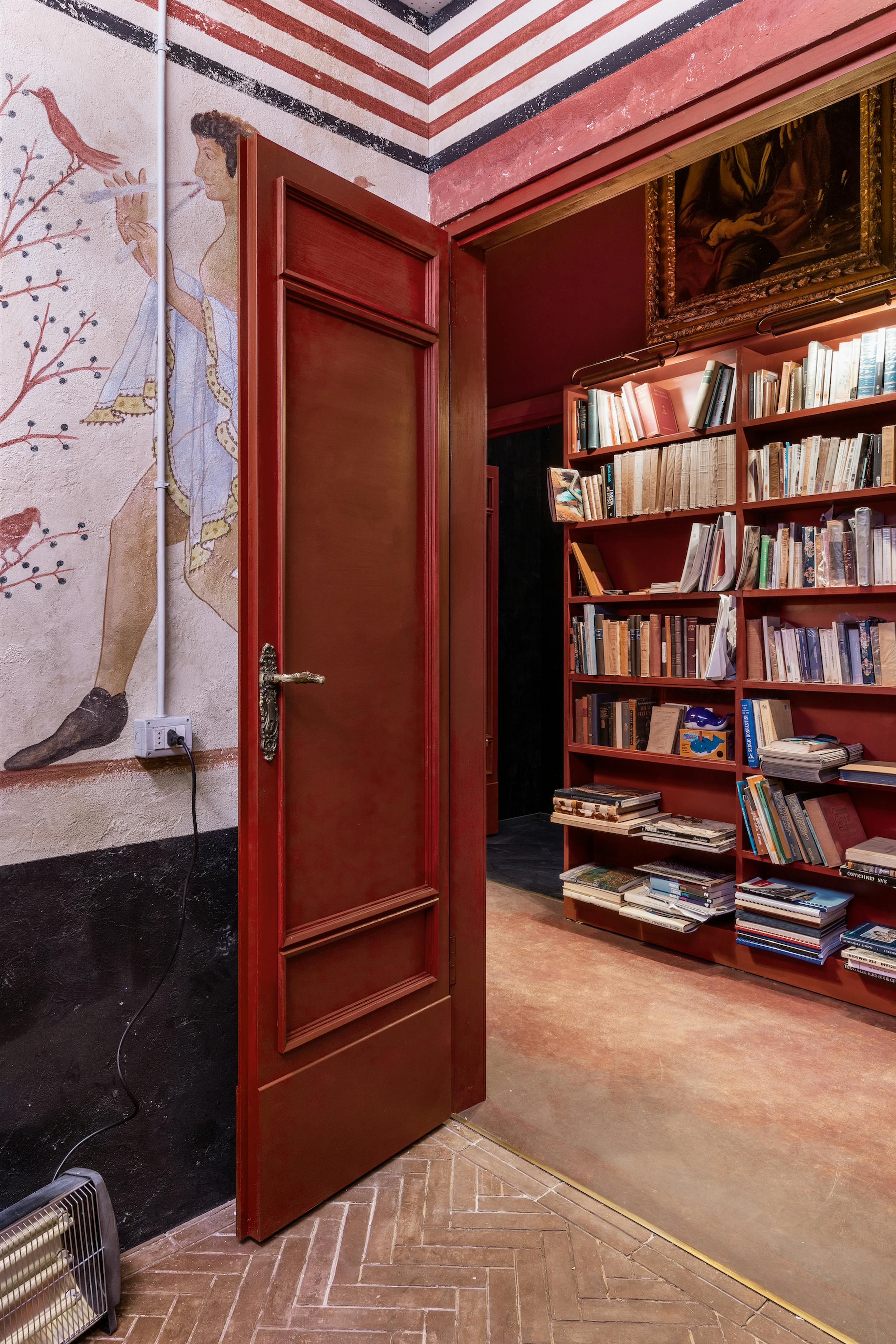
Ph. DSL Studio
The installation is a project by Giovanni Agosti and Jacopo Stoppa with exhibition design by Margherita Palli and lighting consultancy by Pasquale Mari.
The set is an extremely realistic reconstruction of a corridor in a middle-class home of the early 20th century, where mystery lies behind every door. Passing through the various rooms, visitors are inspired to reflect on the limits of knowledge.
The exhibition route travels up and down through the ages, going back to Leonardo da Vinci, with a study of an anthropomorphized moon, and progressing towards the “painters of the imaginary”. Then man faces the natural phenomena of the earth or unleashes his own fantasy, until he realizes that in those places are the depths of what will be called the unconscious.
The only possible exit from this montage of attractions—where the spectator is left with no other escape—is through an Etruscan tomb, while what lies behind the frosted glass door at the end of the long red corridor remains a mystery.
Playing the Unknown
Francesco Bianconi
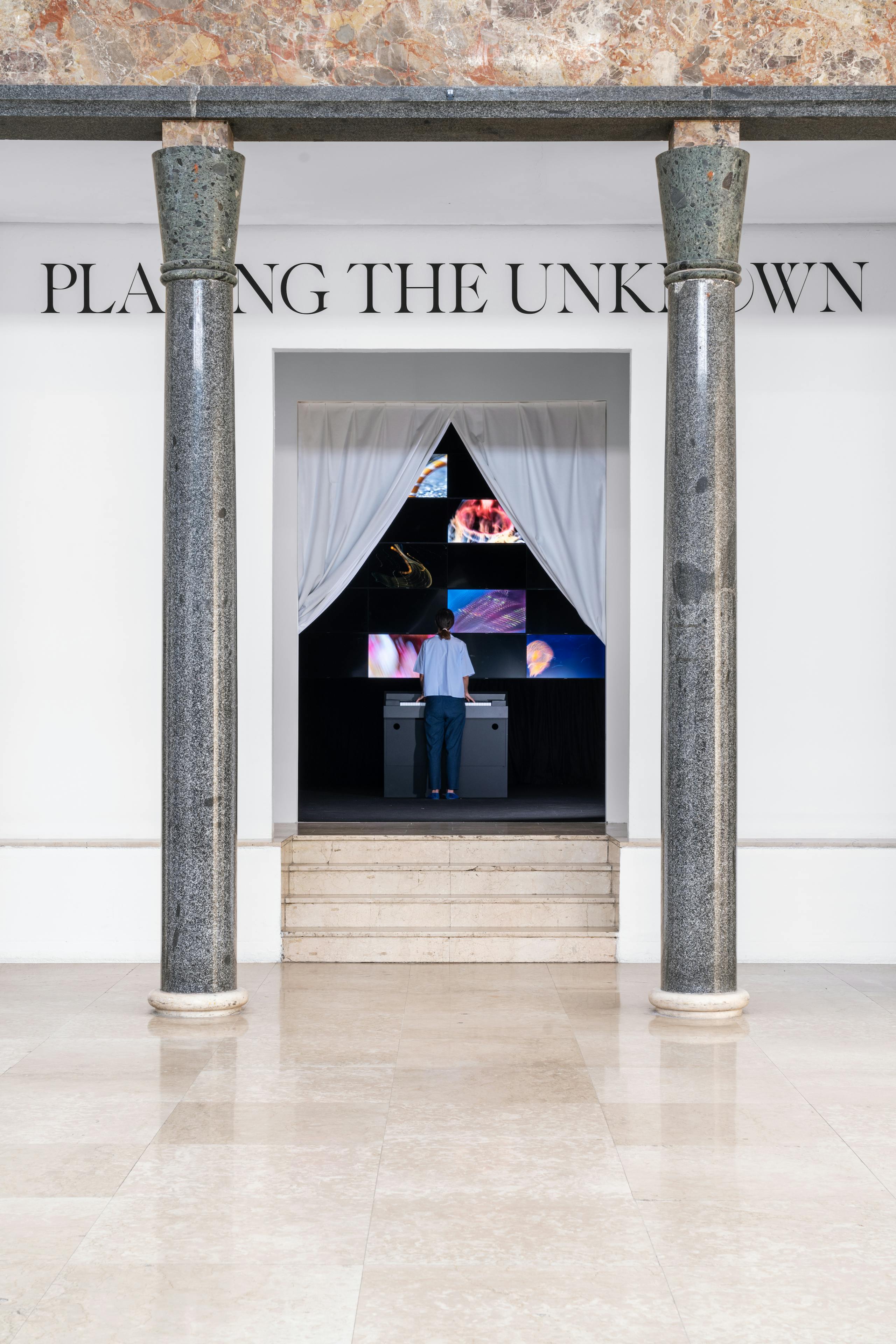
ph. DSL Studio
A dark room, which can be entered by only two people at a time, plays on the visitors’ atavistic fear of the dark to activate their perception of sound. At the centre is a faithful reconstruction of a Mellotron, a rudimentary form of sampler instrument invented in England in 1963 and very popular in 1960s and 1970s rock music.
In an actual Mellotron, each key triggers a seven-second audio loop, while in this installation, each key starts a single track of L’Ignoto (The Unknown), an original song by Francesco Bianconi—musician, songwriter and front man of the Baustelle—and turns on a monitor in the back of the room. Each monitor contains a video loop with a detail of the ocean depths, of which we know only 19%. In effect, the loop refers to an unknown that is truly unknown in reality yet so near to us and, presented in the form of a decontextualized and indecipherable clip.
If all the keys are pressed at the same time, the audio samples come to life like different members of an orchestra and play The Unknown, while the screens light up the room. Since only two people at a time can enter the room, this can never be done – which means that the visitor can never unveil the unknown and its mysteries.
Andrea Branzi. Mostra in forma di prosa
Andrea Branzi, Lapo Lani
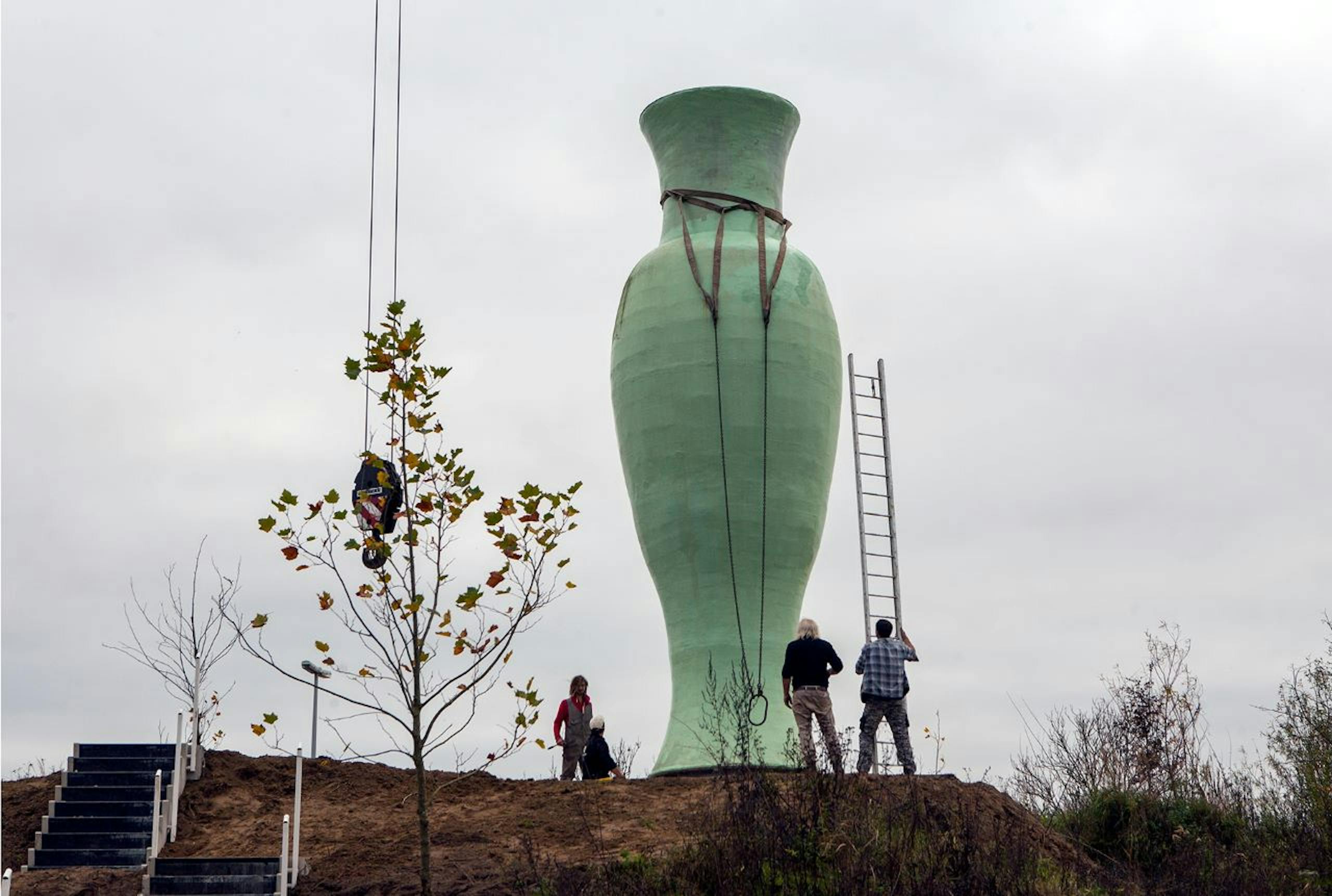
© Tineke Schuumans - Verbeke Foundation
The exhibition, which will be held in the Teatro dell’Arte, introduces a new approach to exhibiting design that does without the physical presence of objects. Instead, it uses the medium of film to illustrate the theoretical work and design skills of one of the greatest exponents of Italian and international design, in a series of events, projects, images, theoretical texts, and texts in prose and verse.
The medium-length film, which lasts about thirty minutes, uses a number of Andrea Branzi’s cultural references in the form of images, musical pieces and artists’ documents, to present some of the most important projects he has worked on in a career spanning about sixty years: beginning with No-stop City, the film proceeds, like the Nazca Lines, through a territory leading from Archizoom and the many Radical Design groups in Florence to the contemporary challenges posed by the new relations between city, agriculture, industry and nature, onto which is introduced design, art and human relations.
This conveys a new vision of the work of an intellectual who has anticipated and interpreted recent shifts in Western civilisation, with the crisis of modernity and a move towards the more complex and more indecipherable aspects of postmodernity. It is a story divided into fragmentary and separate parts, and one that is based on the idea that existence never evolves in a straight line, but goes through seasons that are all different one from the other.
Alchemic Laboratory
Ingrid Paoletti
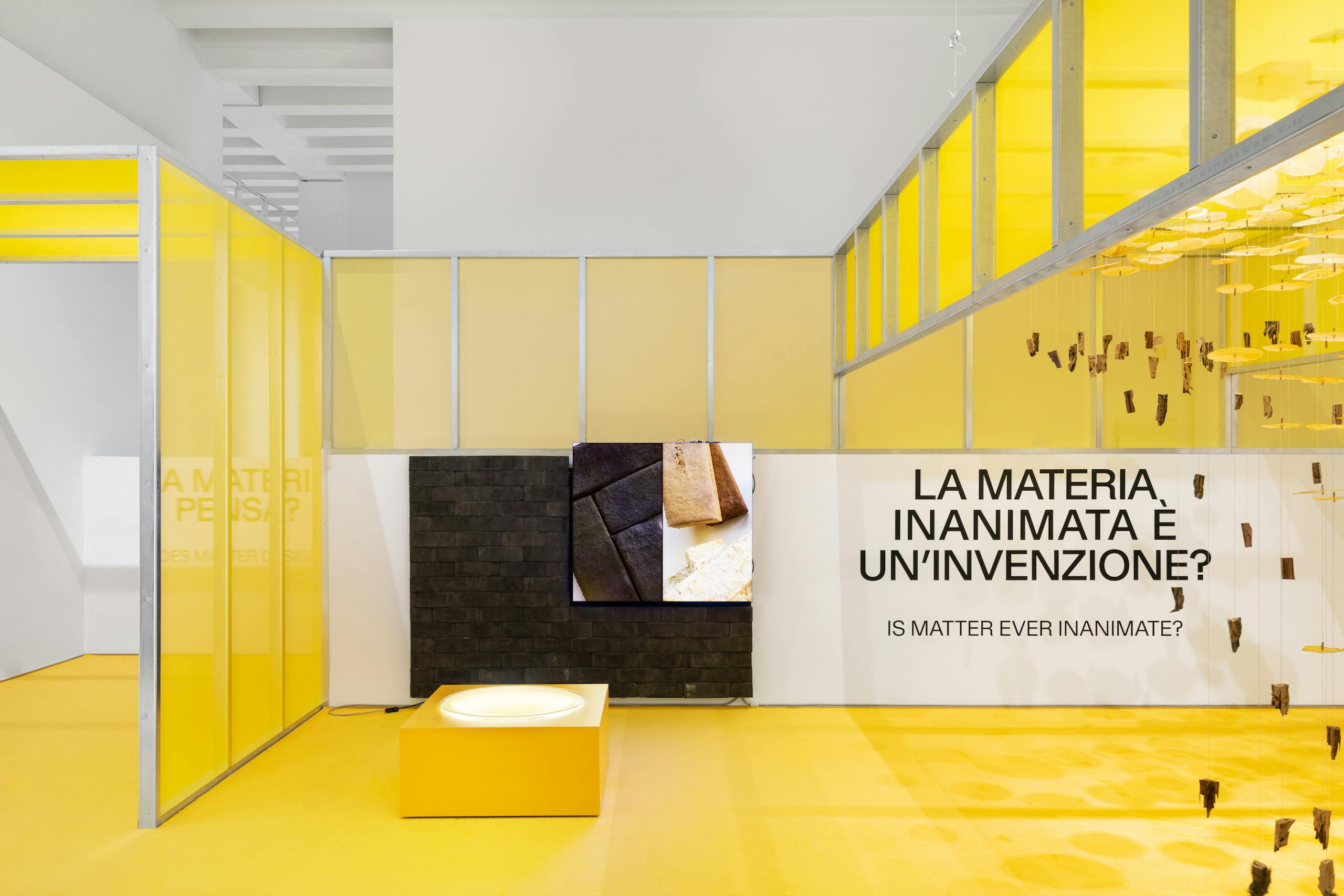
ph.. DSL Studio
The alchemic laboratory is an experiential place that invites the visitor to question the concept of matter. The laboratory is yellow: yellow like that of nature – which serves to attract pollination –, yellow like the lights that protect the micro-electronics sensors from direct radiation and finally citrinas – yellow lemon – as one of the four colors of the alchemical transmutation.
We tend to think at the transformation of matter as a linear and predictable scientific process, but what happens if the boundaries between natural/artificial, alive/inert, extractive/grown, blur? A series of energy, environmental, health and social crises has given us a bitter lesson: nature can be unavailable and not respond to our desires. So, if we lose the control of the process, if we believe in a new conscious material culture, if the material asserts its design reasons, this path opens to imagination, to the unexpected, to the creative vitality.
A number of directly commissioned works complements the constellation of projects of the 23rd Triennale Milano International Exhibition. Through different multisdisciplinary approaches, they intend to offer a variety of points of view over the unknown that surrounds us. From music to science, through art, architecture and design, this edition's special projects reiterate the fundamental concepts at the base of Unknown Unknowns. An Introduction to Mysteries, expanding their implications and horizons.